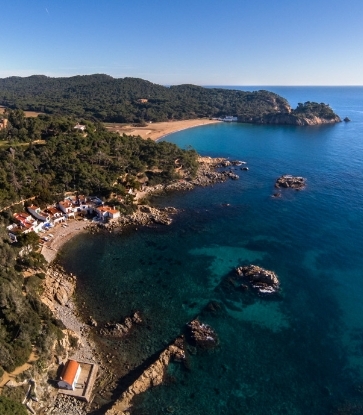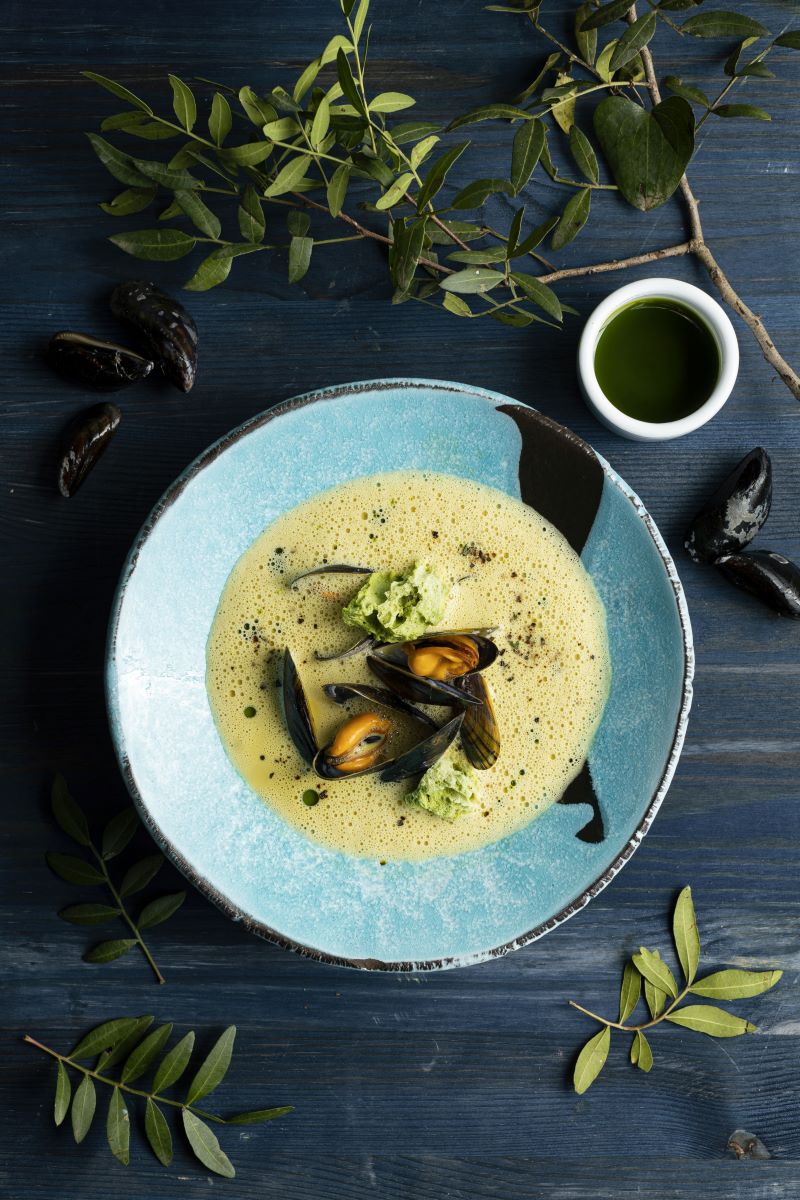Summer in the mid-Atlantic means one thing for seafood fans: hammer time. And by hammers we mean wooden mallets—for cracking crabs, of course!
Crab season is moving full steam ahead, so we asked a few local experts to answer all of our burning questions about the beloved blue crab.
When is crab season in the Chesapeake Bay region?
Legally speaking, crab season this year runs from March 17 to November 30 in Virginia and April 1 to December 15 in Maryland. However, the quantity and quality of product fluctuates significantly during this 10-month window.This variance is a result of the crab's life cycle, which revolves around molting, or shedding its shell as it grows (hence soft shell crabs). Once a crab sheds its shell, it begins the process of hardening again. John Rorapaugh, the Sustainable Director at ProFish, explains that crabs that have just molted aren't filling out their shell as much as those that have been growing for weeks. "Crabs can grow up to 30% in size per shed," he says. "As you get further away from that cycle of life, you get crabs that are fuller."
As a result, the early months of crab season are more of a gamble when it comes to how heavy or full a crab is as they may be caught just after a molt. "As you get into the later months, September, even as far as October, you have really hard crabs and you have very full crabs. That's what everybody looks for," Rorapaugh says.
While most consumers start getting excited about crabs as soon as Memorial Day rolls around, it's actually better to wait until late summer or early fall to indulge. "I personally believe that mid-August through September is the best time for crabs. They're big and plump and fatty," says Jay Caputo, the executive chef at Ivy City Smokehouse. He oversees all the crab purchasing for the tavern and the market, and they go through about 25 bushels per week.
Unlike some crab houses, Ivy City buys and serves exclusively Maryland crabs. Blue crabs can be harvested and sold all year round, but they come from different waters.
What's the big deal about Chesapeake Bay crabs?
Blue crabs are not exclusive to the Bay—they can be found in brackish estuaries along the East Coast through the Gulf of Mexico and as far south as Uruguay. Still, many crustacean connoisseurs remain fiercely loyal to the Chesapeake blue crab.Rorapaugh agrees that blue crabs in this region have a distinct flavor caused by seasonal temperature changes. "Our crab goes through a transition where it has to protect itself during the cold months, so it, in a sense, fattens up to protect itself," he says. "The southern crabs don't really have to go through that."
By comparison, he says crabs from southerly waters can be bland. "When you think of Maryland crab, you have a lot of that mustard and the different colors that are in there and it just has character to it and has more of a flavor to it."
When can you score the best deals?
The months when crabs are fullest also happens to be a great time to get a great price. "You never want to get them around the holidays," Rorapaugh warns. "It's just a simple supply and demand [issue]."September, October, and November deliver the best bang for your buck because demand drops off when the summer unofficially ends. "It seems like [come] Labor Day, the switch just turns off with people and they just don't think about crabs anymore."
Weekdays will also yield better deals than weekends, Rorapaugh adds. "There's nothing to say that you can't have a crab feast at your house during the week. You usually get better prices during the week because it's just not as busy."
While it's always cheaper to buy crabs from a market and bring them home, you can also get great deals at restaurants during the week. Spots that serve crabs on a regular basis are often looking to clear out inventory on Mondays and Tuesdays. Ivy City has run specials offering crabs for as low as $25 per dozen.
Unlike with other seafood, consuming the leftover inventory isn't a concern here. "Crab houses only cook live crabs, so you never have to worry about the fact that they're not fresh," Rorapaugh explains.
Crab prices swing significantly throughout the season, but Rorapaugh says the average cost for a dozen of the largest males is $50 to $60. You can expect to pay as much as $125 a dozen during peak demand. By the bushel at a market, prices can range from $150 to $275.
What should you look for when buying and eating crabs?
If you choose to buy live or steamed crabs from a market, there are a few things you should look for. Rorapaugh says the best test is to check the bellies of the crabs for dark coloration. This staining comes from time spent on the bottom of the Bay. "If they're white-bellied then that means that they haven't been stained yet," which indicates a crab that's just molted, he says. "If they're kind of discolored or darker bellied, then you know that they're a full crab."Caputo always looks for what he calls angry bushels: "That means that they're fresh out of the water and they're really lively." When sourcing crabs for the Smokehouse, he prefers to go directly to the fishermen to get the best product. "I trust the people that we deal with and they're very straightforward," he says. "If we don't get the quality that we want, we just won't serve it. But right now, that is not typical. We have crabs constantly now and they're big and beautiful."
For those looking to crack crabs at a restaurant or crab house, Caputo says don't be afraid to be direct and ask where the crab is sourced from. "You would expect the server to be honest with you," he says. His restaurant only serves Maryland crabs and Maryland jumbo lump crab meat for their crab cakes. "Truth in menu is really important," he adds.
What about the sustainability of crab populations?
Sustainable seafood sourcing is a hot button issue for chefs and diners alike, but the good news is that Chesapeake blue crabs are a reliably safe option. "The blue crab fishery is still one of our best managed fisheries in the Chesapeake Bay," says Chris Moore, senior regional ecosystem scientist for the Chesapeake Bay Foundation. "We have good data about the population. We take that population data each year; we make changes to our regulations."Crab populations in the Bay currently appear to be rebounding after a rough patch during the late 90s through the mid 2000s. "That was what most of us considered the low period in the blue crab population and when we really needed to be doing a bit better in terms of how we managed that fishery," Moore explains.
"Fortunately, in 2008, Maryland and Virginia really for the first time got together when it comes to managing blue crabs," he says. "They basically agreed upon a 34% reduction in the number of females that we're going to catch in the Chesapeake Bay, and since that time the population has generally responded well."
"We're in a pretty good place with blue crab populations right now," Moore says. "We are not perfect in that we'd like to see more adult females." The fishery is monitored each year via the Winter Dredge Survey, which samples about 1,500 sites around the Bay and counts all the crabs caught. These numbers are measured against the harvest numbers to calculate the exploitation rate, or how many crabs are harvested compared to the total population. "We've been below [the exploitation target] for the last 7 or 8 years, which is again a good sign that we're doing a good job managing the fishery."
Legal catch size regulations vary for each of the three jurisdictions: Maryland, Virginia and the Potomac River. "What they're trying to do with those regulations generally is try to increase the profitability of the catch for the watermen who are actually harvesting those," Moore explains. They also allow crabs to grow and reproduce sufficiently before being caught.
"Not every year's going to be great. Weather's going to influence how many crabs are born and population of fish species is going to influence how many crabs are eaten by other things," he says. "Generally, we are in a pretty good place right now, and so I think it's one of those things that consumers should be able to enjoy without feeling bad about it."
What are the projections for this season?
Last year, Maryland closed their crab season early in order to protect populations. "Usually when they do that, then you have a really good late part of the next year's season," Rorapaugh says. His prediction is that the latter half of this season will be more robust than the first half.How can you help crab populations thrive in the future?
If you love blue crabs, Moore says you should also care about other populations in the Bay. "The blue crab population doesn't in any way, shape or form function by itself out there in the ecosystem. It's dependent upon things like having healthy grass habitat to survive in the long term."Underwater grasses provide sanctuary for juvenile crabs, so a rise in submerged aquatic vegetation is good news for your crustacean cravings. "That is one of the most important habitats for blue crabs that we have, and having more underwater grass out in the Bay is going to make for a healthier environment for blue crabs."
Actions on land by homeowners in the watershed can have a direct impact on these grasses. Moore says simple things like installing rain gardens on your property and not over-fertilizing your lawn can help ensure you'll be able to enjoy Chesapeake blue crabs for decades to come.
Photo by Leading DC/Ivy City Smokehouse.





















